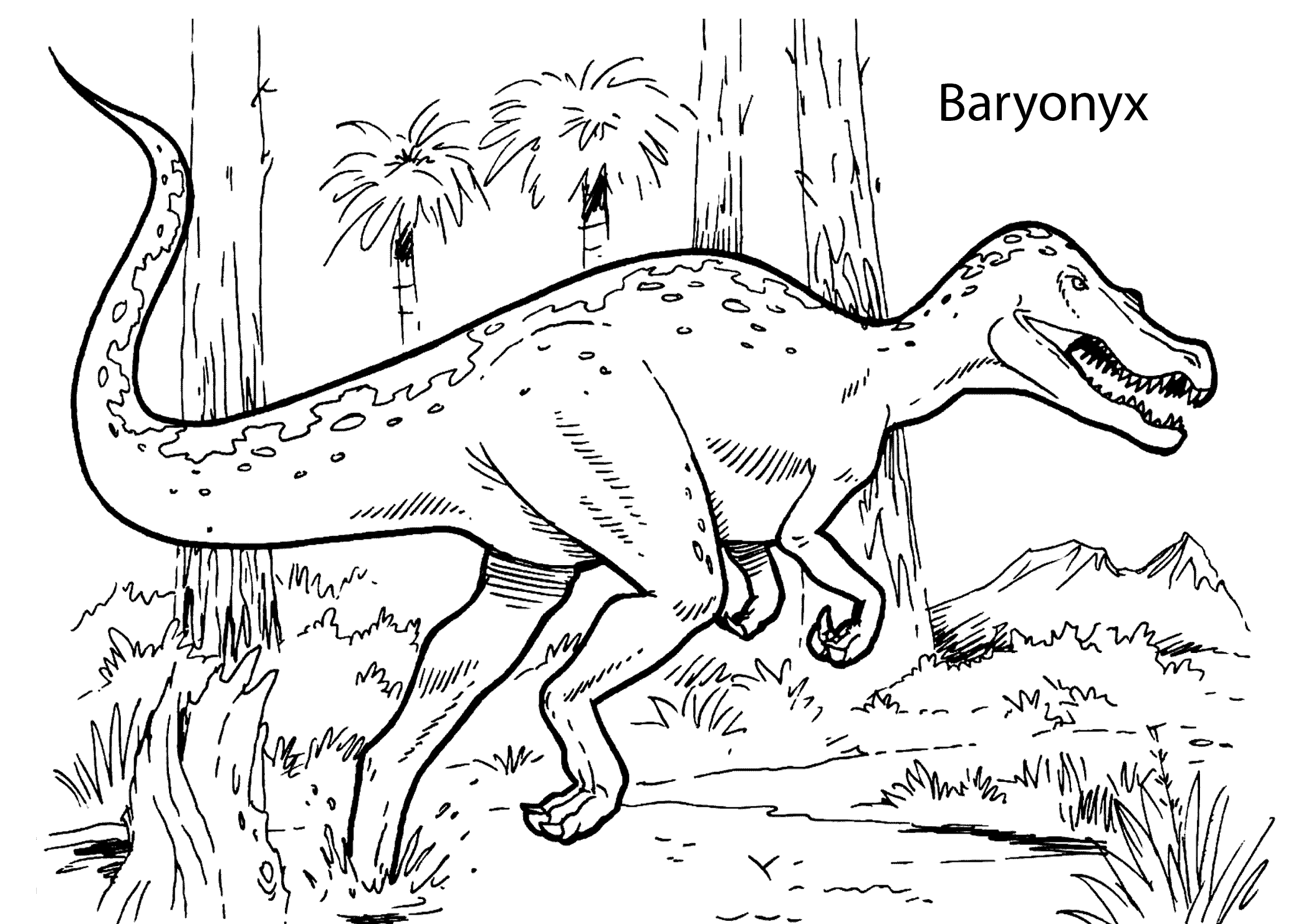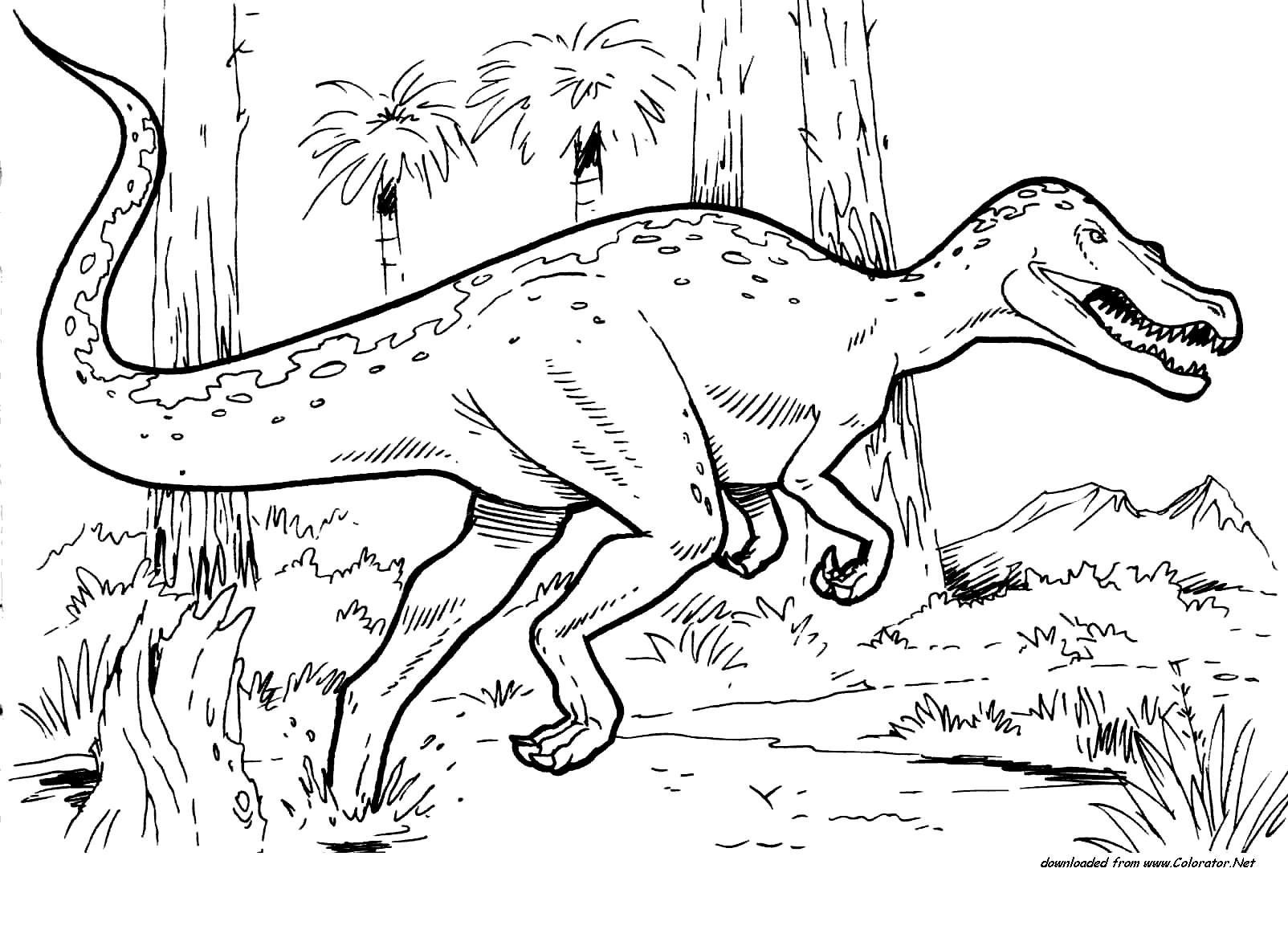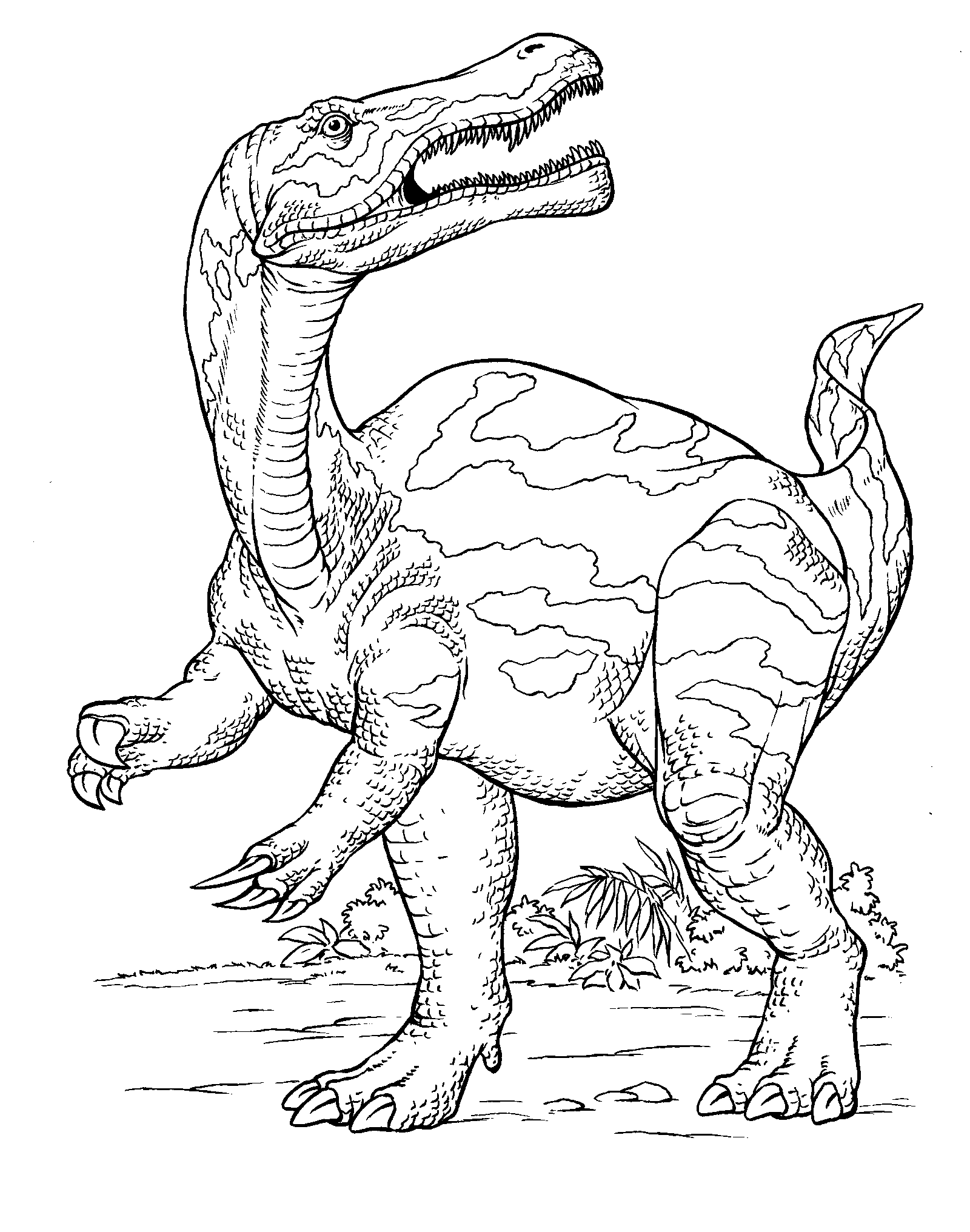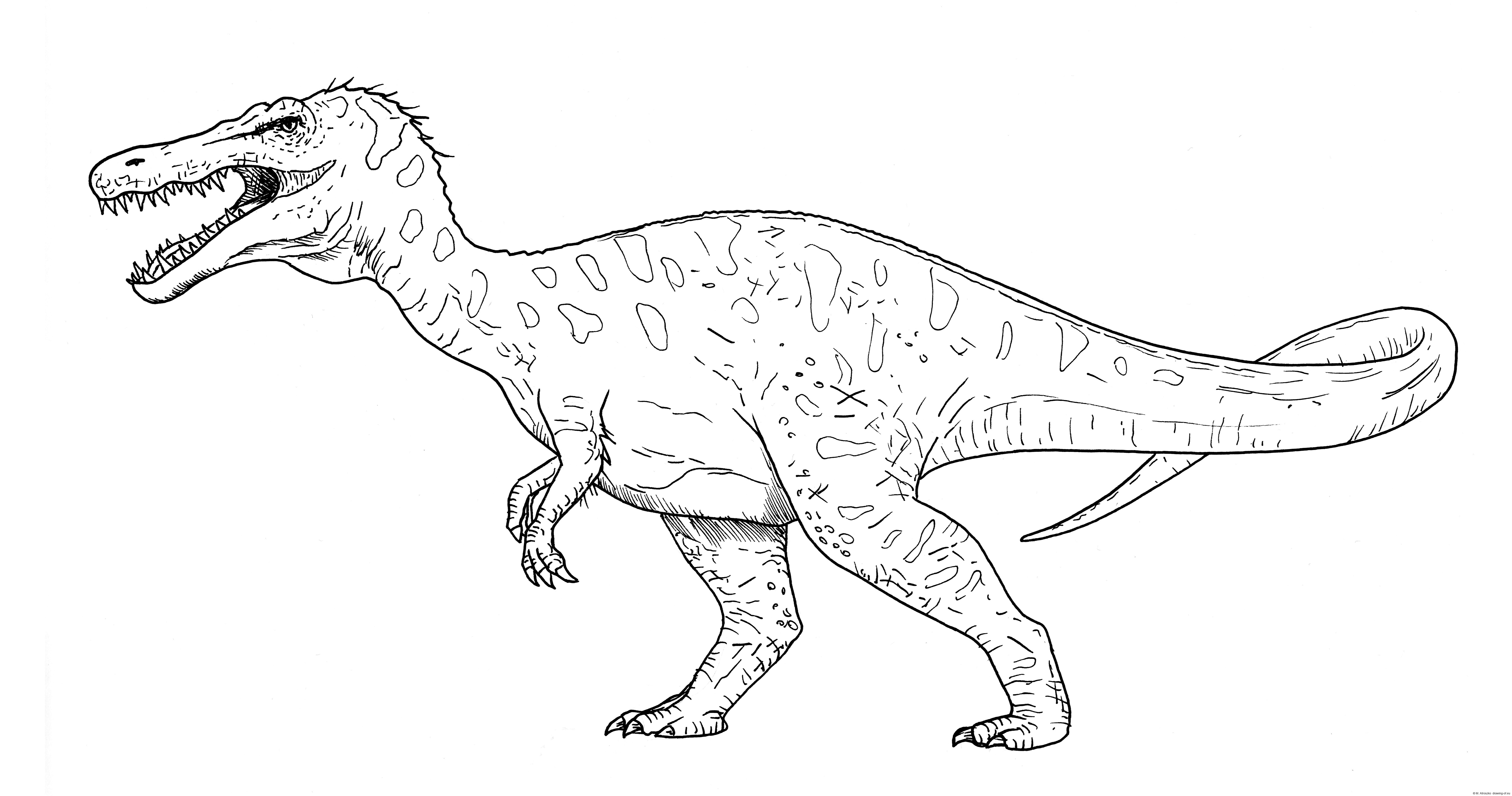Baryonyx is a genus represented by a single species of spinosaurid theropod dinosaur. Get these dinosaurs in the following printable Baryonyx coloring pages.
They were lived in the mid-Cretaceous period, approximately 125 million years ago, during the Aptian, in what is now Europe.
Free Baryonyx Coloring Pages

baryonyx coloring pages for kids 
baryonyx coloring pages printable 
baryonyx coloring pages to print 
baryonyx coloring pages 
baryonyx coloring page 
cartoon baryonyx coloring pages 
free baryonyx coloring pages 
free printable baryonyx coloring pages 
realistic baryonyx coloring pages
The first specimen was found in England and later reported from northern Spain and Portugal. Baryonyx was between 8.5 meters long and about 3 meters high.
It probably weighed about 1.7 tons, although bone analysis suggests that the Wealden specimen had not yet finished growing at the time of death and could have been up to 10 meters long and weighed 2 tons. Baryonyx is a very unusual theropod.
The structure of its pelvis suggests that it was bipedal when it moved from one place to another. However, its forelimbs were absurdly long for a theropod, indicating that it spent a lot of time on all four limbs.
Like the dromaeosaurids, Baryonyx had a pair of large curved claws, about 35 centimeters long, but unlike the latter, they were located not on the feet but the hands.
The bone structure suggests the existence of a powerful musculature in the forelimbs, much larger than in most theropods. The long neck was very inflexible and did not have the S-shape of many other theropods.
The skull was inserted at an acute angle and not straight, as is common in similar dinosaurs. The large jaws were uniquely crocodilian in appearance and had 96 teeth, twice as many as most of its relatives. 64 of these teeth were located in the lower jaw and 32, more extended, in the upper jaw.
The snout had a small ridge. The upper jaw had a sharp angle near the snout, a feature seen in crocodiles that helps prevent prey from escaping. A similar part is also seen in shrikes.
During the Early Cretaceous, primitive Wealden Lake covered most of what is now northern Europe.
Alluvial plains and river deltas running through the higher ground of what is now London flowed here. Baryonyx was discovered in these ancient deltas.
In 1983, an amateur “fossil hunter”, William Walker, found a giant claw protruding from a clay pit in Surrey. With the help of others, he proceeded to extract the rest of the specimen, which was virtually intact.
The skeleton was handed over for excavation to doctors at the Natural History Museum in London. They published their description of the type specimen in 1986 and named the new species Baryonyx walkeri in Walker’s honor.
About 70% of the skeleton, including the skull, was recovered. This allows paleontologists to make numerous inferences about Baryonyx from this specimen.
Some years after the English discovery, a partial skull and several teeth and wrist bones of Baryonyx were found at Salas de Los Infantes, located in Burgos, northern Spain.
Two more claws were found in the Republic of Niger in West Africa, another in 1996 on the Isle of Wight. A store of old fossils in the Isle of Wight museum yielded a forearm of a Baryonyx in December 1997.
These remains had been unearthed in previous decades on the island’s southwest coast and had been lying unsorted in a box at Carisbrooke Castle ever since.